How screenwriter Justin Marks ’02 turned Shōgun into a television sensation.
Columbia College | Columbia University in the City of New York
How screenwriter Justin Marks ’02 turned Shōgun into a television sensation.
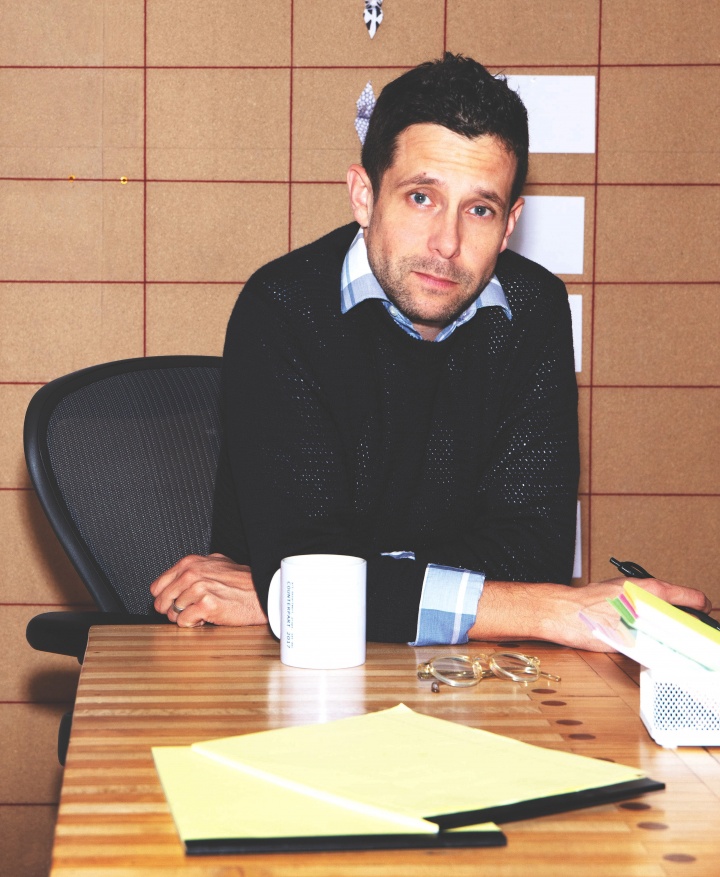
JÖRG MEYER
“We learn to numb ourselves to the ups and downs. Especially the downs,” wrote Marks. “But when it picks up — when there’s a movie being made or a star being attached or a deal being closed — man, that high feels like it’ll last forever.”
Smash cut to today, and it’s safe to say Marks couldn’t publish a column about being a screenwriter you’ve never heard of. In the years following the publication of that cheerfully self-deprecating story, Marks has achieved a remarkable run of high-profile hits. He wrote the screenplay for Disney’s blockbusting 2016 remake of its animated classic The Jungle Book. He co-wrote the story for 2022’s Top Gun: Maverick, a long-delayed sequel that charmed moviegoers and critics alike on its way to a $1.5 billion gross and an Academy Awards Best Picture nomination. And most recently — working alongside his wife, Rachel Kondo — he co-created the hit FX series Shōgun, which made headlines in September when it became the most awarded single season of television in the history of the Emmy Awards.
If you think a screenwriting career is an unlikely path for someone who graduated from the College with a degree in architecture, Marks has an explanation. “I’d wanted to write movies since I was 12,” he says. “I thought the film program would be a great home for me.” But during his freshman year, he received a paradigm-shifting piece of advice from Professor Larry Engel SOA’76: “If you have other interests, you should pursue those other interests at Columbia.” Marks settled on architecture, he says, and to this day much of his screenwriting process is informed by it. At times, he still works on a drafting table, which he calls his “happy place.”

Marks’ work on two blockbusters — the live action remake of The Jungle Book and Top Gun: Maverick — established him as a creative force.
Marks built architecture directly into his scripts. After moving to Los Angeles post-graduation to launch his Hollywood career, one of the first screenplays he sold was set in a prison for supervillains, and he delighted in the process of crafting a panopticon-like stronghold that could contain so many baddies with unique superpowers. Even now, “I can’t understand the characters until I understand the world they live in,” Marks says. “It’s still the thing that brings me joy.”
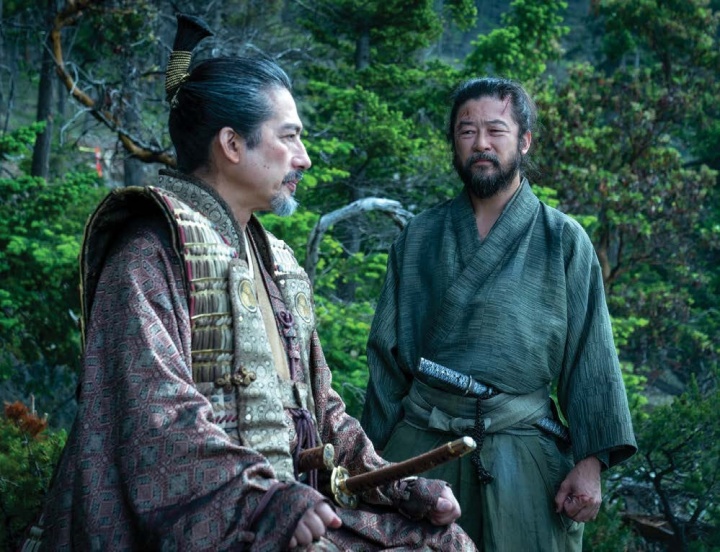
Characters Lord Toranaga and Yabushige have a revealing conversation.
COURTESY OF FX NETWORKS
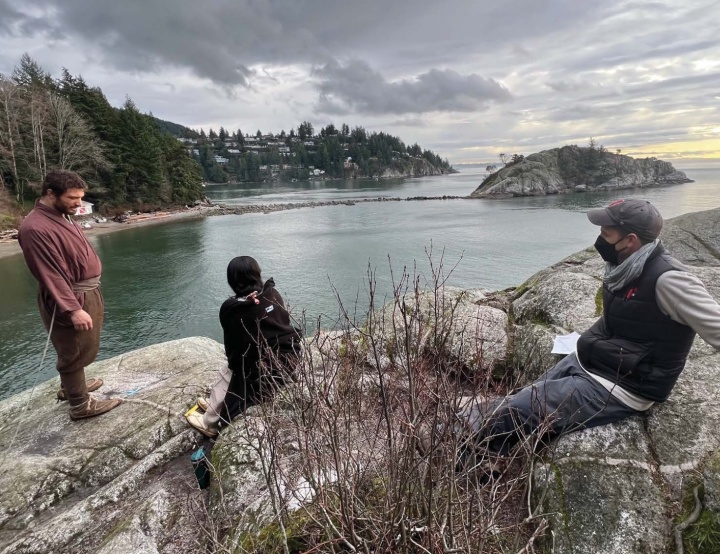
Marks, right, observes a scene with Cosmo Jarvis as John Blackthorne.
COURTESY JUSTIN MARKS ’02
It’s easy to see why FX saw blockbuster potential in Shōgun. A previous 1980 miniseries adaptation, starring Richard Chamberlain and Toshiro Mifune, had been an award-winning hit, and that was decades before shows like HBO’s Game of Thrones hooked audiences on ambitious, moody prestige dramas full of political machinations and stark twists. But it’s also easy to see how Shōgun — the most expensive scripted series in FX history — could have emerged as a pricey, regrettable boondoggle. It is, Marks once joked, “a very expensive subtitled Japanese period piece whose central climax revolves around a poetry competition.”
Still, FX had been trying to get a fresh adaptation off the ground for years, which is why the network sent Marks a copy of the novel shortly after he signed an all-around development deal in 2018. It was a 1,312-page doorstop, making the prospect of adaptation both daunting and tantalizing. “He was, rightfully, kind of nervous about it,” Kondo says. “But I could tell it was resonating. He would wake up and sit there, for pretty much eight hours a day, to read it as fast as he could.” Ultimately, they agreed: “If something can be more than 50 years old and still feel timely, it’s probably more timeless than anything,” Kondo says.
For the couple, the key to Shōgun was the depth of the characters and the relationships between them. But they knew the way to make it stand out in the crowded TV landscape was to tell the story as authentically as possible. Though Shōgun is historical fiction, its plot closely echoes a key moment in the history of feudal Japan, and the costumes, trappings and even musical techniques of the era were meticulously studied and then recreated. Many of its characters speak only Japanese, and the difficulty and necessity of translation to non-speakers is one of the show’s recurring themes. The show’s scripts went through a modern version of that process: Written in English, then translated into Japanese by a specialist in the period-accurate writing style Jidaigeki, then subtitled in English with an eye for capturing the full nuance of each word spoken.
The process took months. “I would be lying, and so would [FX chairman] John Landgraf, if he said we never had a conversation ... not to say that it should be in English, but to say, ‘Are we sure we can do this? Because here’s what we think it’ll cost,’” says Marks. “And I came up with a four- or five-point bullet point plan on how we were going to try to do subtitles differently — make it sort of special — and that’s why it would be worth it. And they said, ‘OK.’ They believed in it, too.”
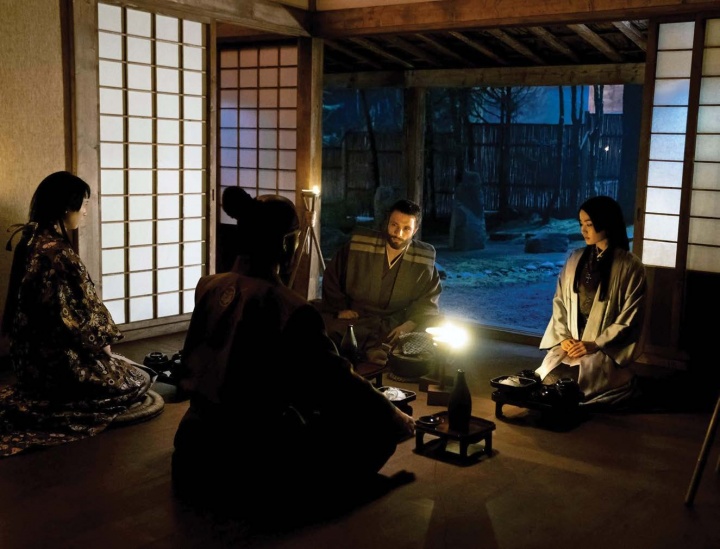
Marks’ architectural knowledge helped to cultivate Shōgun’s drama; thin shoji screens and sliding doors meant privacy was never guaranteed.
COURTESY OF FX NETWORKS
Though everyone involved with the ballooning creative challenge of Shōgun was coming to grips with the enormity of the task ahead, there was one additional production hurdle no one could have anticipated: the Covid-19 pandemic, which led to repeated shutdowns of the show’s sets in Vancouver, B.C. One of the few upsides, Marks recalls, was that he and Kondo’s two daughters — both born during the show’s lengthy production — could occasionally use the large wooden ship constructed for the show as a playground.
By the time Shōgun premiered to almost universal acclaim in February 2024, it was clear that FX had something big on its hands. The question was how big. The answer came in July, when the show scored a whopping 25 Emmy nominations. Some were in the technical categories, such as production design and costume design, that had required painstaking historical accuracy. Others were for the show’s many groundbreaking performances, highlighting Japanese actors such as Hiroyuki Sanada and Tadanobu Asano, who had rarely received attention in mainstream Hollywood. And the series itself earned a Best Drama nomination, which it handily won — the big capper on an awards run that ultimately saw Shōgun walk away with 18 trophies.
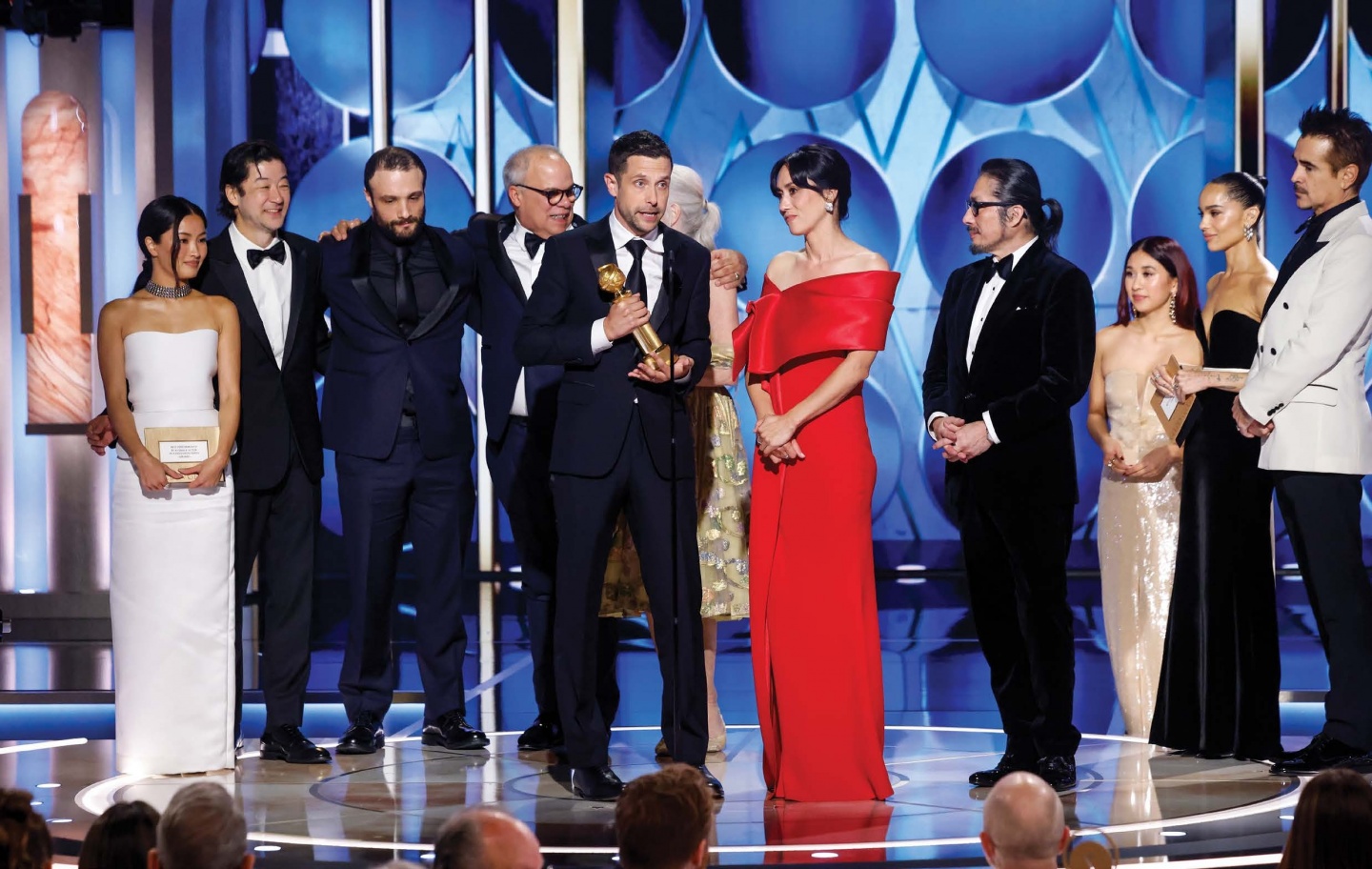
Shōgun continued its awards run on Jan. 5, winning four Golden Globes including for Best Television Series - Drama. Marks (center) attended with his wife, Shōgun co-creator Rachel Kondo (to his right).
CBS PHOTO ARCHIVE / GETTY IMAGES
Attending the Emmys was “scary, terrifying, insane,” says Marks. As the show transitioned from high-profile gamble to an awards juggernaut in real time, “I could feel the room turning. ‘Again, Shōgun.’ And we’re just sinking lower and lower in the seats.”
What brought him joy, Marks concluded later, wasn’t a stack of golden statuettes that would overcrowd even the largest mantle. It was what they meant to the people who — like him — had toiled in the industry for years with minimal recognition for their endless hours and sleepless nights. “People sacrificed so much to make this show,” says Marks. “That’s the thing I think of the most. Teary-eyed conversations with some of our Japanese crew who were there that night, who came over to work. For this show, they gave up their families for almost a year.”
That record-setting Emmy run could have been a fairytale ending for a series that seemed destined to go down as one of modern television’s great one-season wonders. But by then, bucking the limited-series designation on which Shōgun had originally been sold and built, FX expressed interest in what a second season might look like.
In that 2013 column for The Hollywood Reporter, Marks described one of the great joys of being a screenwriter: the opportunity to wander through an entire film set that had been crafted, entirely, from images that sprang from your head. Even when his career was at lower ebbs, “I’d been privileged to walk through my own imagination,” he wrote.
When I mention that sentimental reflection in the context of Shōgun, Marks laughs. “The thing about showrunning, I guess, is that you get beaten to death by your own imagination.” Kondo says she sees a clear difference between working with Justin the screenwriter and Justin the showrunner: “One is happy, and the other one is pissed.” But he’s also, she says, a “reluctant genius” at the art of shepherding a project as big as Shōgun. “Justin’s pretty relentless. He just kept pushing,” Kondo says. “He is kind of the guy on top of the mountain — not unlike [Shōgun character] Toranaga. He has all the power. But it’s an incredibly lonely place to be.”
The show’s writing room formally reunited last summer to map out what a second and even third season might look like. “It was one thing to take a nosedive off a cliff, not knowing how scary it was going to be,” says Marks. “It’s another thing to go up and do it again.” And unlike the first season, which had the spine of Clavell’s novel, future seasons of Shōgun will be venturing into the unknown; the first season ended where the novel ended, so the show’s next arc will be original.
Marks is, perhaps understandably, reluctant to go into too much detail about Shōgun’s future before a single frame has been shot. “I think people are going to be pretty surprised with a lot of things that happen in the first episode alone,” he allows. But he’s also confident that the show’s creative brain trust has found the right way forward. “It took us a couple years to really come to these ideas. So we didn’t come to them lightly. We have a healthy respect for the monster in front of us, I think.”
Now, as Marks prepares to return to Shōgun’s world, he once more comes back to the language of architecture. “When it comes to the sets — in the world that you’re building with your crew — the show that you’re able to build is an expression of, ‘We were here,’” he says with a smile. “And it lingers. You can’t ever take that away.”
Scott Meslow is a Los Angeles Press Club-nominated entertainment and culture critic. His next book, A Place Both Wonderful and Strange: The Extraordinary Untold History of Twin Peaks, will be published by Running Press in 2026.

Published three times a year by Columbia College for alumni, students, faculty, parents and friends.
Columbia Alumni Center
622 W. 113th St., MC 4530, 6th Fl.
New York, NY 10025
212-851-7852
cct@columbia.edu

Columbia Alumni Center
622 W. 113th St., MC 4530, 4th Fl.
New York, NY 10025
212-851-7488
ccalumni@columbia.edu